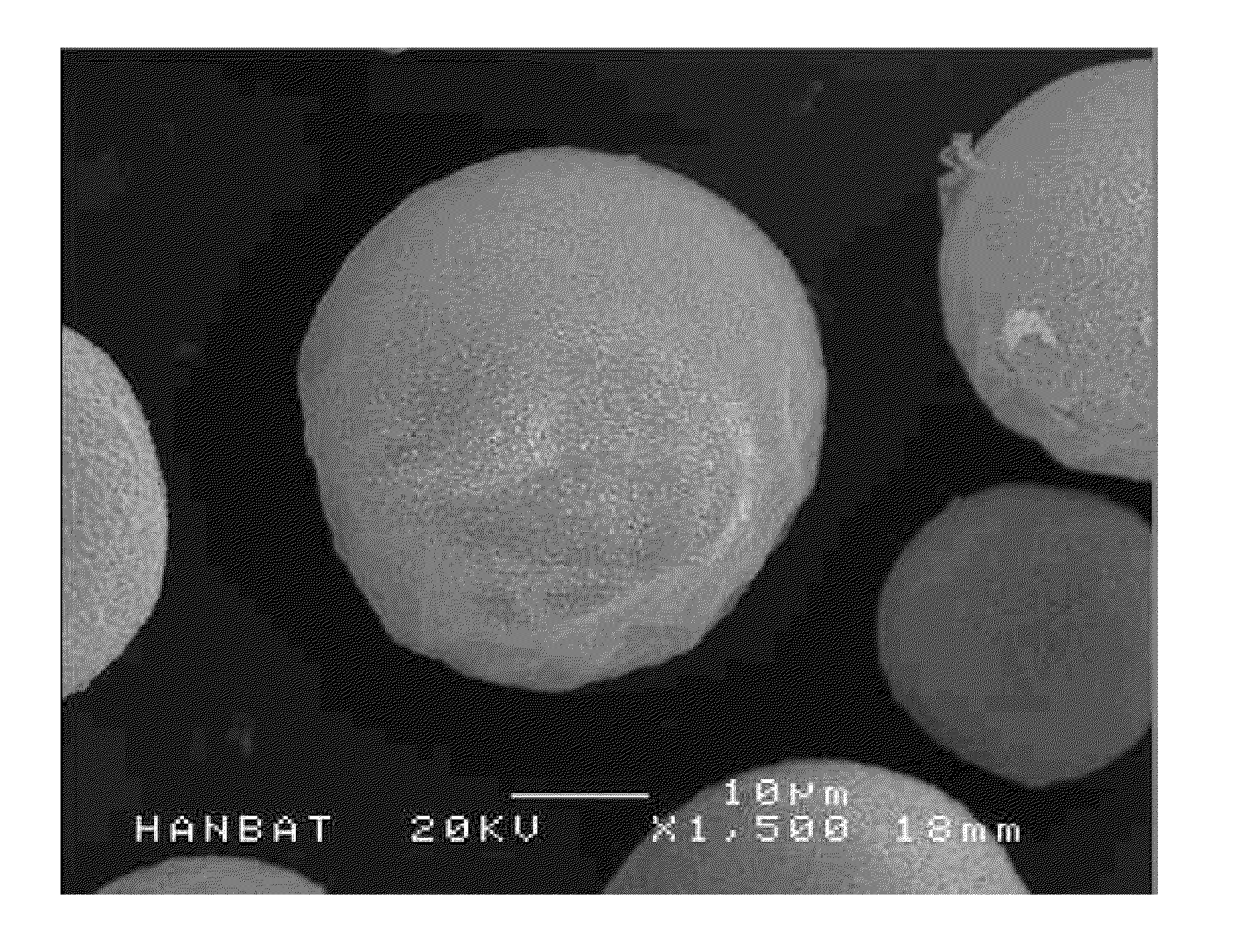Biodegradable polymer microparticles and preparation method thereof
a polymer microparticle, biodegradable technology, applied in chemical/physical processes, natural mineral layered products, synthetic resin layered products, etc., can solve the problems of imposing a physical/economical burden on a patient, providing an ideal environment, and unable to protect the cells contained, etc., to achieve high biodegradability, high porosity, and high biocompatibility
- Summary
- Abstract
- Description
- Claims
- Application Information
AI Technical Summary
Benefits of technology
Problems solved by technology
Method used
Image
Examples
example 1
[0052]Preparation of a Polymer Microparticle According to the Present Invention
[0053](1) 35 g of poly(D,L-lactic-co-glycolic acid (PLGA) having an average molecular weight of 110,000 and a lactic acid-glycolic acid ratio of 75:25 was dissolved in 500 ml of DMSO (Dimethyl Sulfoxide) to provide a 7% (w / v) polymer solution. The polymer solution was sprayed into n-hexane cooled to −5° C. in an amount of 0.2 g / min, with sprayed air in an amount of 5.0 l / min. Herein, the sprayed polymer solution was frozen into a spherical shape in the low-temperature n-hexane.
[0054]The frozen microparticle was collected and left in 1,000 ml of 25% (w / v) NaCl aqueous solution cooled to −20° C., for 72 hours so as to dissolve the component of DMSO. Then, through filtration, a polymer microparticle from which DMSO had been removed was obtained. The obtained microparticle was washed with 5,000 ml of distilled water, and filtrated so as to filter out the remaining DMSO and NaCl. Then, through freeze-drying, a...
example 2
[0058]Check of Physical Properties of Polymer Microparticles of the Present Invention
[0059]In order to check the properties of each of the biodegradable polymer microparticles prepared from Example 1, the size, the yield, and the apparent density of the biodegradable polymer microparticles were measured. Herein, the size of the microparticle was measured through the electron microscopic photograph, and the yield was calculated by the amount of finally obtained microparticles comparing to the amount of introduced polymer. The apparent density was measured by introducing a predetermined amount of the microcarrier into a predetermined volume of a mass cylinder, and by tapping a predetermined number of times at a predetermined rate by a densitometer.
[0060]As a result, as shown in FIGS. 1 to 5, and as noted in Table 1, it can be seen that in proportion to the amount of sprayed polymer solution, and in inverse proportion to the amount of sprayed air, the size of the microparticle is incre...
PUM
| Property | Measurement | Unit |
|---|---|---|
| diameter | aaaaa | aaaaa |
| melting point | aaaaa | aaaaa |
| temperature | aaaaa | aaaaa |
Abstract
Description
Claims
Application Information
 Login to View More
Login to View More - R&D
- Intellectual Property
- Life Sciences
- Materials
- Tech Scout
- Unparalleled Data Quality
- Higher Quality Content
- 60% Fewer Hallucinations
Browse by: Latest US Patents, China's latest patents, Technical Efficacy Thesaurus, Application Domain, Technology Topic, Popular Technical Reports.
© 2025 PatSnap. All rights reserved.Legal|Privacy policy|Modern Slavery Act Transparency Statement|Sitemap|About US| Contact US: help@patsnap.com



